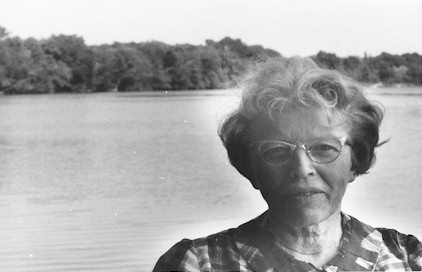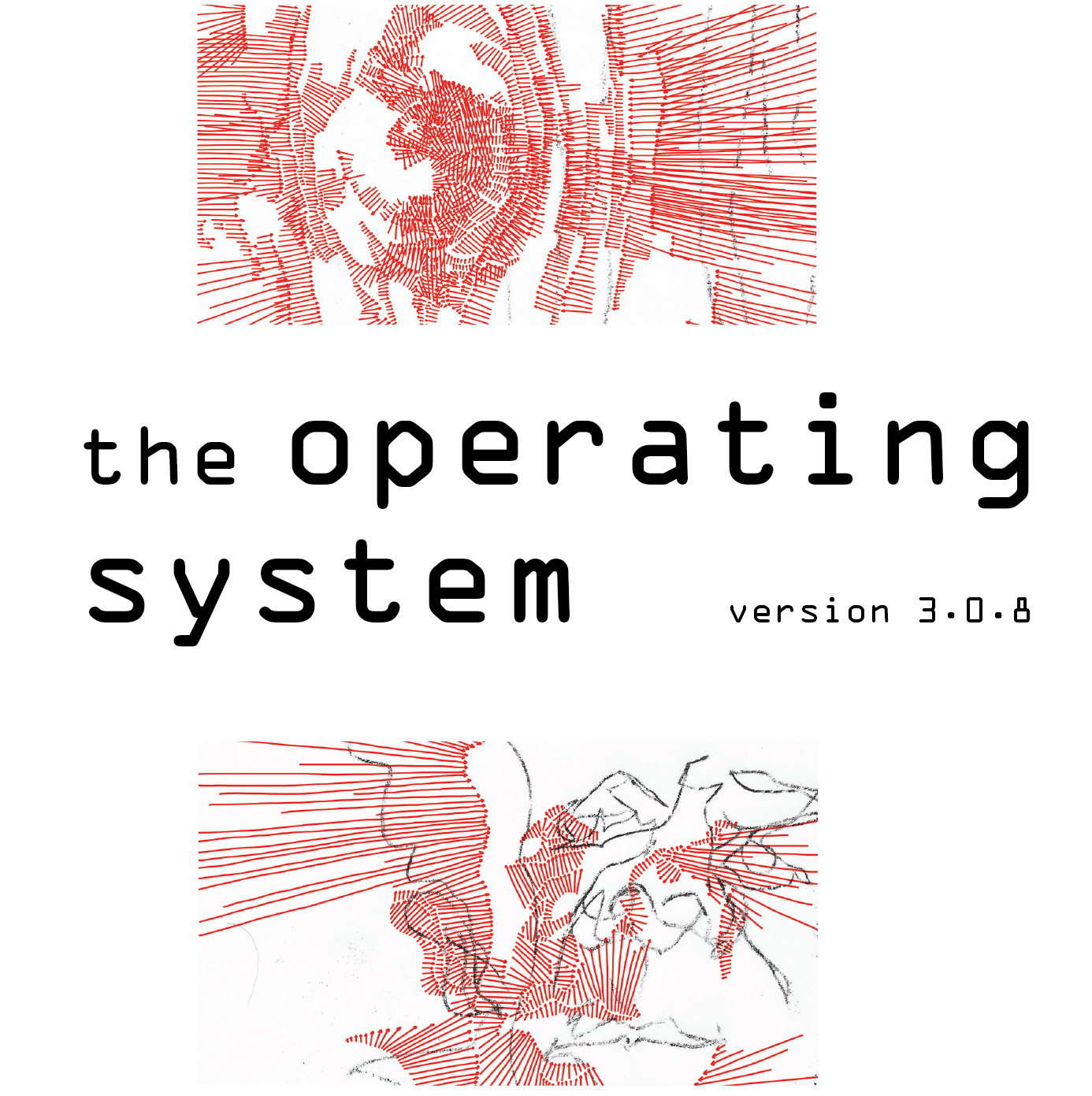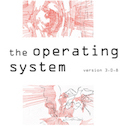
POETRY MONTH 30/30/30 : Inspiration, Community, Tradition: DAY 23: Lauren Marie Cappello on Lorine Niedecker
 The way it happens with water is like this: The beginning is unclear, maybe it happened first with rain, maybe the clouds made water from vapor or notes on dreams. Also, there is the way the water moves; it is sure of itself, searching the lowest point – steady in the breaking down of it retaining its structure to the smallest division. It asserts itself in seeking to fill its surroundings, tracing a path from one substance to the next leaving great distinction between where it is and where it is not. Lorine Niedecker’s poetry contains the essence of the water she lived by, moving across one phenomenon, seeking another in connection like a river, leaving a trail on the small portion of those places her poetry touches.
The way it happens with water is like this: The beginning is unclear, maybe it happened first with rain, maybe the clouds made water from vapor or notes on dreams. Also, there is the way the water moves; it is sure of itself, searching the lowest point – steady in the breaking down of it retaining its structure to the smallest division. It asserts itself in seeking to fill its surroundings, tracing a path from one substance to the next leaving great distinction between where it is and where it is not. Lorine Niedecker’s poetry contains the essence of the water she lived by, moving across one phenomenon, seeking another in connection like a river, leaving a trail on the small portion of those places her poetry touches.
Niedecker’s work places the objects before the reader; it is in the selection of them by this poet that the scene is imbued with meaning. All else is relative. Throughout the objectivist movement, most avoided metaphor in their poetry. They took to the style of portraying the happening as it was with a feeling that in its conveyance to the audience the intended emotion would be transmitted. Niedecker’s work is a hybrid of objectivism blended with her interest in surrealism, which was contained and bubbling just below the surface. In a letter to Monroe in 1934, Lorine wrote”…the whole written with the idea of readers finding sequence for themselves, finding their own meaning whatever that may be, as spectators before abstract painting.”
Niedecker seamlessly interweaves personal subject matter with the outward quality of the Objectivist movement. She called this approach, “monologue tongue”, lending weight to the idea that series of sounds, their patterns and rhythms in correlation to human consciousness had enough of an effect to serve as a conduit for conveyance.
The vicissitude of Niedecker’s line breaks link one image with another seemingly disparate image. The spiraling shape of “Paean to Place” creates by the overlay of thought that spans stanzas and connects disparate ideas and images to each other while encompassing its meaning and highlighting individual pairings. Working in tandem with the precise line breaks, Niedecker also used the layout of the poem to make use of the heaviness of silence between them to guide the reader to a specific place, as water guides itself to the lowest point.
By washing away debris, leaving what is sturdy, she condenses images and events to their fundamental structure, and in doing so they are transformed into that which is both relatable and profound in the personal realm of the poet’s life. Through this purification the objects take on a surreal quality since this naked and crisp form, frequently present in dream-states, is so obscure, yet familiar that the essence draws upon the psyche to externalize it in the way it would with surrealist imagery. Through the use of conventional imagery she bypasses the conscious mind,creating an aura of emotion that textures the image with the reader’s subjective experience of archetypical phenomenon.
“Paean to Place” was written in 1970, and within it the culmination of her life and growth as a poet are evident. Through the title she makes it known she is writing in homage to praise a place; “and the place was water”. Not only is she paying homage to the external water she lived by, but also to its general quality and influence upon her life. The altered renku form the “niedecku” is the form that moves this poem forward. In traditional renku, the first three lines and last two had different authors, being passed back and forth between the two writers. In the Niedecku, it is her own life experience that bring each stanza to a close. The first three lines of each stanza bears a tonal quality that evokes a particular mood based on the textural synthesis of the objects Lorine chose. The following two lines provide a sense of understanding of that quality. With the layout as serpentine, and spatially varied as the objects in her life, it seems as if she were looking around the room and creating maps of objects with words on pages.
Water shapes, erodes and changes that which it surrounds. Lorine Niedeker’s life by water molded her poetry. Through her liquid and flowing form, her poems define borders between subconscious and conscious states of mind the way a river divides land and sky. The rhythm of her words, and her silences, perpetuate motion.
[Editor’s note, #1: importing formatting from Word/Open Office to Word Press is the bane of my existence. Clearly, lacunae in my technical intelligence…there must be some obvious answer that continues to elude me. You can continue on to Niedecker’s poem below, but for a prettier, potentially more satisfying read, click here.]
Paean to Place
by Lorine Niedecker
And the place
was water
Fish
fowl
flood
Water lily mud
My life
in the leaves and on water
My mother and I
born
in swale and swamp and sworn
to water
My father
thru marsh fog
sculled down
from high ground
saw her face
at the organ
bore the weight of lake water
and the cold—
he seined for carp to be sold
that their daughter
might go high
on land
to learn
Saw his wife turn
deaf
and away
She
who knew boats
and ropes
no longer played
She helped him string out nets
for tarring
And she could shoot
He was cool
to the man
who stole his minnows
by night and next day offered
to sell them back
He brought in a sack
of dandelion greens
if no flood
No oranges—none at hand
No marsh marigold
where the water rose
He kept us afloat
I mourn her not hearing canvasbacks
their blast-off rise
from the water
Not hearing sora
rails’s sweet
spoon-tapped waterglass-
descending scale-
tear-drop-tittle
Did she giggle
as a girl?
His skiff skimmed
the coiled celery now gone
from these streams
due to carp
He knew duckweed
fall-migrates
toward Mud Lake bottom
Knew what lay
under leaf decay
and on pickerel weeds
before summer hum
To be counted on:
new leaves
new dead
leaves
He could not
—like water bugs—
stride surface tension
He netted
loneliness
As to his bright new car
my mother—her house
next his—averred:
A hummingbird
can’t haul
Anchored here
in the rise and sink
of life—
middle years’ nights
he sat
beside his shoes
rocking his chair
Roped not “looped
in the loop
of her hair”
I grew in green
slide and slant
of shore and shade
Child-time—wade
thru weeds
Maples to swing from
Pewee-glissando
sublime
slime-
song
Grew riding the river
Books
at home-pier
Shelley could steer
as he read
I was the solitary plover
a pencil
for a wing-bone
From the secret notes
I must tilt
upon the pressure
execute and adjust
In us sea-air rhythm
“We live by the urgent wave
of the verse”
Seven year molt
for the solitary bird
and so young
Seven years the one
dress
for town once a week
One for home
faded blue-striped
as she piped
her cry
Dancing grounds
my people had none
woodcocks had—
backland-
air around
Solemnities
such as what flower
to take
to grandfather’s grave
unless
water lilies—
he who’d bowed his head
to grass as he mowed
Iris now grows
on fill
for the two
and for him
where they lie
How much less am I
in the dark than they?
Effort lay in us
before religions
at pond bottom
All things move toward
the light
except those
that freely work down
to oceans’ black depths
In us an impulse tests
the unknown
River rising—flood
Now melt and leave home
Return—broom wet
naturally wet
Under
soak-heavy rug
water bugs hatched—
no snake in the house
Where were they?—
she
who knew how to clean up
after floods
he who bailed boats, houses
Water endows us
with buckled floors
You with sea water running
in your veins sit down in water
Expect the long-stemmed blue
speedwell to renew
itself
O my floating life
Do not save love
for things
Throw things
to the flood
ruined
by the flood
Leave the new unbought—
all one in the end—
water
I possessed
the high word:
The boy my friend
played his violin
in the great hall
On this stream
my moonnight memory
washed of hardships
maneuvers barges
thru the mouth
of the river
They fished in beauty
It was not always so
In Fishes
red Mars
rising
rides the sloughs and sluices
of my mind
with the persons
on the edge
& as homage to Neidecker, and in celebration of Poetry Month, a poem of my own.
Sandcastle
A childhood
summer, though
barefoot we
Did not have
exact change to
build a castle
From time as sand
or breath as wet
as prayer or fog
On glasses, spent
where orange is
not a flavor, or color
My walls have
yet to weaken,
but a chair
In procession.
The downtown R
to Brooklyn.
Lauren Marie Cappello ventures to achieve a state of non-duality within each poem. She is a contributing editor for Eratio Poetry Journal, and her work has appeared in Uphook Press’s Gape-Seed, & Polarity Magazine. Aside from performing her poetry at a variety of local venues she teaches yoga, & dances burlesque. A former New Yorker, she now resides in New Orleans, LA.
Editor’s note: for more Niedecker-inspired work and critical inquiry, please enjoy this digitally rendered version of I Was the Solitary Plover, from 2006, put out by the Friends of Lorine Niedecker. What I’ve added below, as well, is a quiet look inside the beautiful edition of Handmade Poems, the book she made and sent to Louis Zukofsky, which was recently (re)issued as part of the Lost and Found document initiative, with wonderful editorial vision and notes by John Harkey. Handmade Poems was produced in collaboration with A Longhouse Birdhouse, who also have issued A Cooking Book, another of Niedecker’s handmade pieces.


